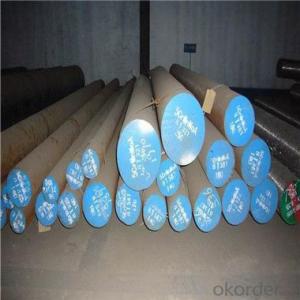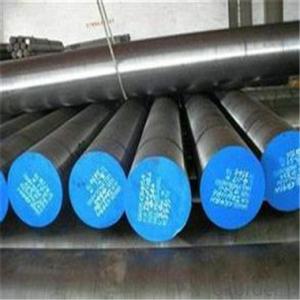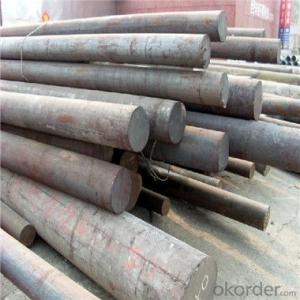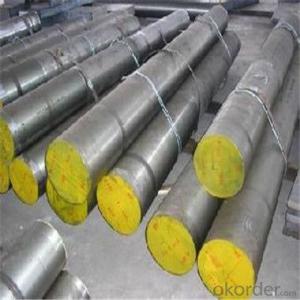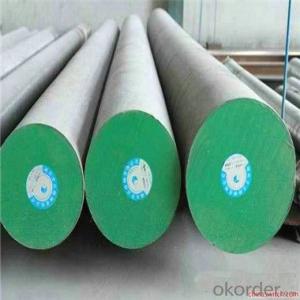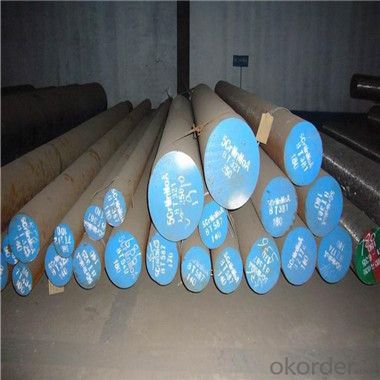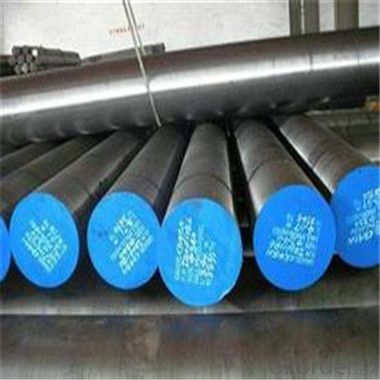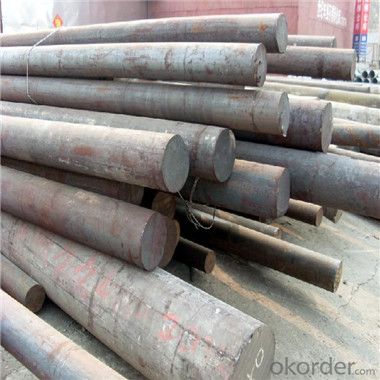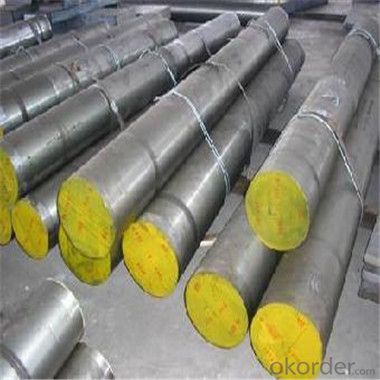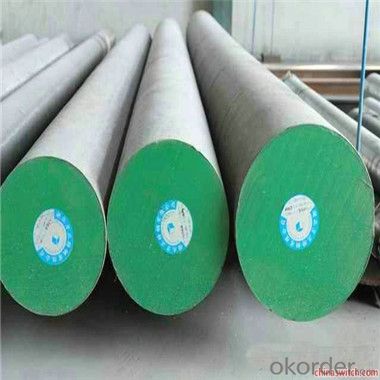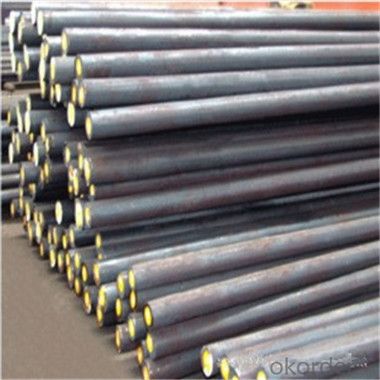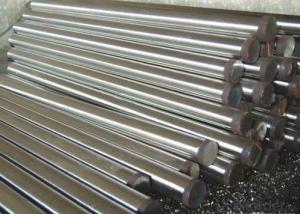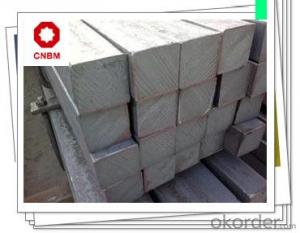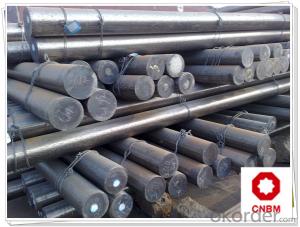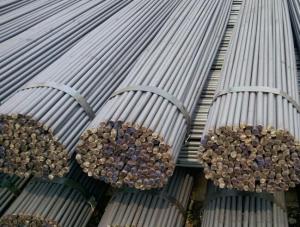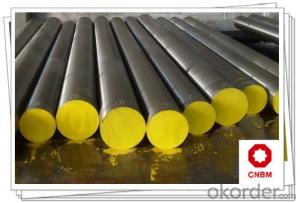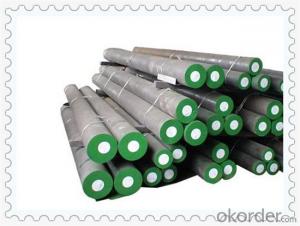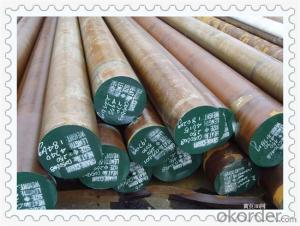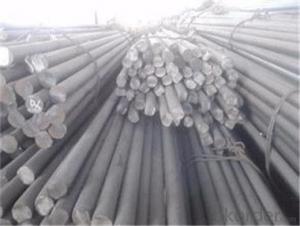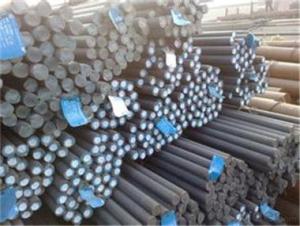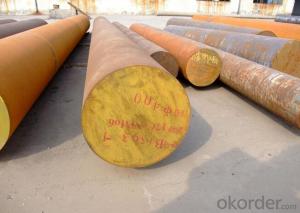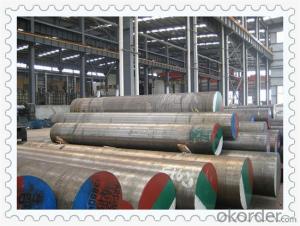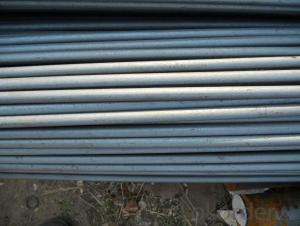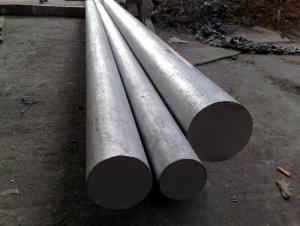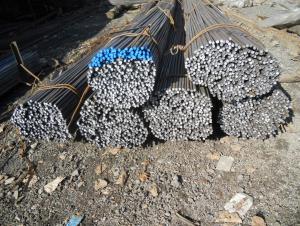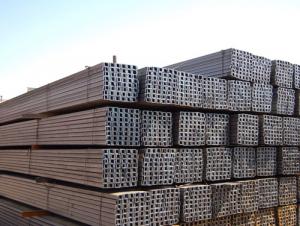Forged Steel Round Bar SAE8620 /C45 /42CrMo4
- Loading Port:
- China main port
- Payment Terms:
- TT OR LC
- Min Order Qty:
- 5 m.t.
- Supply Capability:
- 100000 m.t./month
OKorder Service Pledge
OKorder Financial Service
You Might Also Like
Specification
Forged Steel Round Bar SAE8620 /C45 /42CrMo4
Specifications
SAE8620,forged steel round bar,size:90mm to 800mm,Rough turned,Normalized,Annealed,
Quenched and Tempered.
Forged steel round bar
Steel grade:
Carbon steel:
Chinese Standard:20#,25#,35#,45#,50#,60#;
Japan Standard:S20C,S25C,S35C,S45C,S55C,S60C;
US Standard:AISI1020,AISI1040,AISI1045,AISI1050;
Europe Standard:CK15,C.22,C45,CK45,C60,CK60;C45E;
Alloy Steel:
Chinese Standad:16Mn,20Mn,30Mn2,30Mn5,40Cr,Q345D,Q345E,Q390;42CrMo,
20CrMo,38CrMoAl,40CrNiMo;48CrMo,5CrNiMo;
Janpan Standard:SCM415,SCM420,SCM440,SNCM439,SNCM220; SACM645
USA Standard:SAE4140,SAE4130,SAE9840,SAE4340,AISI4145H,SAE4150,SAE8620,
Europe Standard:42CrMo4,25CrMo4,34CrNiMo6,39CrNiMo3,17NiCrMo6,18CrNiMo7-6,
S355J2G3,ASTM A105,ST52-3,16MnCr5,20MnCr5,16MnCrS5,20MnCrS5,21CrMoV511,
56NiCrMoV7,18NiCrMo5,30CrNiMo8,34NiCrMo16,41CrAlNi7,34CrAlNi7,B7,B16,F11,
F12,F22,F5,F9,51Cr4.
Tool Steel:1.2714,H13,H11,P20,SKD61;
Delivery condition:Forged+Normalized/Annealed+RoughTurned
+Quenched and Tempred;
Also can supply the finish products according the drawings;
Length:3 meters or 4 meters and up or fix length according the actually needs
Size:90mm-800mm
Diameter tolerance:-0/+6mm Black surface -0/+2mm Rough Turned
Steel ingot:EAF+LF+VD;
Also use ESR Process if needed;
Ultrasonic Test:According GB/T6401-91 Class 1,Class 2,Class 3;
And GB/T6402-2008 Class 3,Class 2;
And Sep1921 Class C/c,D/d,E/e, Or ASTM A388 Standards;
Grain Size:Better than 6;
Purity, non-metallic inclusions, mechanical properties, hardness According China or EU
Standard;
Quantity:70000 Tons per year
Including Forged round bar 55000 Tons,
Forged square bars 12000Tons,
Other forgings like forged step shaft,forged hollow bars,forged rollers 3000 Tons;

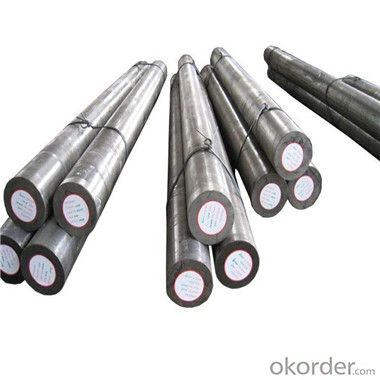
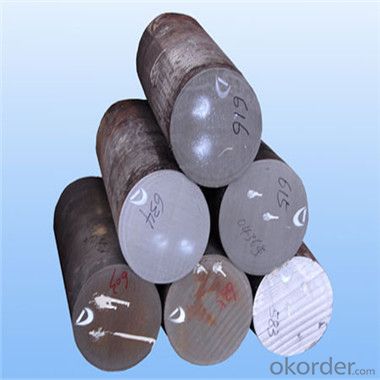
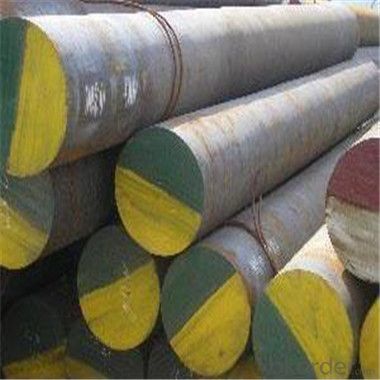
- Q: What is the maximum weight that can be lifted using a steel round bar as a lifting rod?
- The maximum weight that can be lifted using a steel round bar as a lifting rod depends on several factors such as the diameter and length of the bar, the material composition and quality of the steel, and the lifting technique employed. Steel round bars have different load-bearing capacities based on their dimensions and grade. The load-bearing capacity of a steel bar can be calculated using engineering principles and formulas specific to the material and geometry of the bar. To determine the maximum weight that can be lifted with a particular steel round bar, it is necessary to consider its ultimate tensile strength (UTS), yield strength, and factor of safety. The UTS represents the maximum stress a material can withstand before failure, while the yield strength is the stress at which permanent deformation occurs. The factor of safety is a design parameter that accounts for uncertainties and ensures structural integrity. It is crucial to consult engineering references, standards, or professionals to obtain accurate and reliable information regarding the load-bearing capacity of a specific steel round bar. They can provide the necessary calculations, taking into account the diameter, length, and material properties of the bar, as well as the intended lifting application and safety requirements. In summary, the maximum weight that can be lifted using a steel round bar as a lifting rod depends on various factors and cannot be determined without considering the specific characteristics of the bar and the lifting scenario. Consulting engineering resources or experts is essential to ensure safe and accurate calculations.
- Q: Can steel round bars be used in the manufacturing of shafts?
- Shafts can indeed be manufactured using steel round bars. The utilization of steel round bars for shaft production is common owing to their remarkable mechanical properties, durability, and high strength. The bar's circular form facilitates the machining and forming procedures, rendering it appropriate for producing shafts of diverse lengths and sizes. Moreover, heat treatment can be applied to steel round bars to augment their hardness, strength, and resistance to wear, thus enhancing their suitability for shaft applications.
- Q: How about tempering No. 45 round bar?
- Quenching and tempering is the double heat treatment of quenching and high temperature tempering, the purpose is to make the workpiece have good comprehensive mechanical properties.
- Q: Can steel round bars be annealed?
- Yes, steel round bars can be annealed. Annealing is a heat treatment process that involves heating the steel to a specific temperature and then gradually cooling it, which helps to relieve internal stress, improve ductility, and enhance the material's machinability.
- Q: Can steel round bars be used for making steering components?
- Yes, steel round bars can be used for making steering components. Steel round bars are known for their high strength and durability, making them suitable for applications that require a strong and reliable material. Steering components, such as tie rods or steering shafts, often require a sturdy material to withstand the forces and stresses associated with steering mechanisms. Steel round bars can provide the necessary strength and stability needed for these components, making them a suitable choice for steering system applications.
- Q: How do you measure the length of a steel round bar?
- In order to determine the length of a steel round bar, one must utilize a measuring tool, specifically a tape measure or ruler. Firstly, it is important to confirm that the bar is positioned upon a level surface. Subsequently, align the zero mark of the tape measure or ruler with one extremity of the bar. Steadily hold the measuring tool against the bar and proceed to extend it along the entire span until reaching the opposing end. Pay close attention to the measurement displayed on the tape measure or ruler at the precise point where the other end of the bar lines up. This measurement denotes the length of the steel round bar.
- Q: Can steel round bars be hardened or tempered?
- Yes, steel round bars can be hardened or tempered. Hardening is a heat treatment process that involves heating the steel to a specific temperature and then rapidly cooling it, typically by quenching it in water or oil. This process increases the hardness and strength of the steel, making it more resistant to wear and deformation. Tempering, on the other hand, is a heat treatment process that involves reheating the hardened steel to a lower temperature and then cooling it slowly. This process reduces the brittleness of the steel and improves its toughness and ductility. Both hardening and tempering can be done on steel round bars to achieve specific mechanical properties desired for various applications.
- Q: Are steel round bars susceptible to rust?
- Steel round bars are indeed susceptible to rust. Rust is the result of a chemical reaction between iron and oxygen in the presence of moisture. Since steel is primarily made of iron, it can rust when exposed to air and moisture. However, the susceptibility to rust can be reduced by taking certain preventive measures. Steel round bars can be coated with protective layers such as paint, oil, or galvanized coatings to create a barrier between the steel and the surrounding environment, thus preventing or delaying the onset of rust. Regular maintenance, including cleaning and reapplying protective coatings, can further help in minimizing the risk of rust formation on steel round bars.
- Q: Are steel round bars suitable for marine applications?
- Yes, steel round bars are a viable option for marine applications. Steel is renowned for its robustness, endurance, and ability to withstand corrosion, making it a popular preference for a wide range of marine uses. Marine structures, such as shipbuilding, offshore platforms, and marine equipment, frequently incorporate steel round bars. The exceptional tensile strength of steel enables it to endure the harsh conditions of the marine environment, including the corrosive impact of saltwater. Moreover, steel is easily fabricated and welded, rendering it a versatile material for marine applications. Nevertheless, it is crucial to consider the specific requirements of the marine application and select the most suitable type of steel round bar. Duplex stainless steel, for instance, surpasses standard carbon steels in terms of corrosion resistance and is frequently favored for marine applications. Additionally, proper maintenance and the application of protective coatings are imperative to guarantee the longevity and performance of steel round bars in marine settings. In conclusion, steel round bars are a fitting choice for marine applications due to their strength, durability, and corrosion resistance. However, it is vital to choose the appropriate type of steel and implement adequate maintenance practices to ensure optimal performance in the marine environment.
- Q: What are the typical dimensions of a steel round bar?
- The dimensions of a steel round bar can vary depending on the specific application and industry requirements. Generally, diameter sizes for steel round bars range from 1/4 inch to 24 inches. These sizes are often measured in increments of 1/8 inch or 1/4 inch. The length of a steel round bar is usually standardized at 20 feet, although shorter lengths may also be available. It is important to consider that these dimensions can significantly differ based on the grade and type of steel used, as well as the manufacturing process. Therefore, it is crucial to refer to the appropriate industry standards or consult a supplier for precise dimensions required for a particular project.
Send your message to us
Forged Steel Round Bar SAE8620 /C45 /42CrMo4
- Loading Port:
- China main port
- Payment Terms:
- TT OR LC
- Min Order Qty:
- 5 m.t.
- Supply Capability:
- 100000 m.t./month
OKorder Service Pledge
OKorder Financial Service
Similar products
Hot products
Hot Searches
Related keywords
